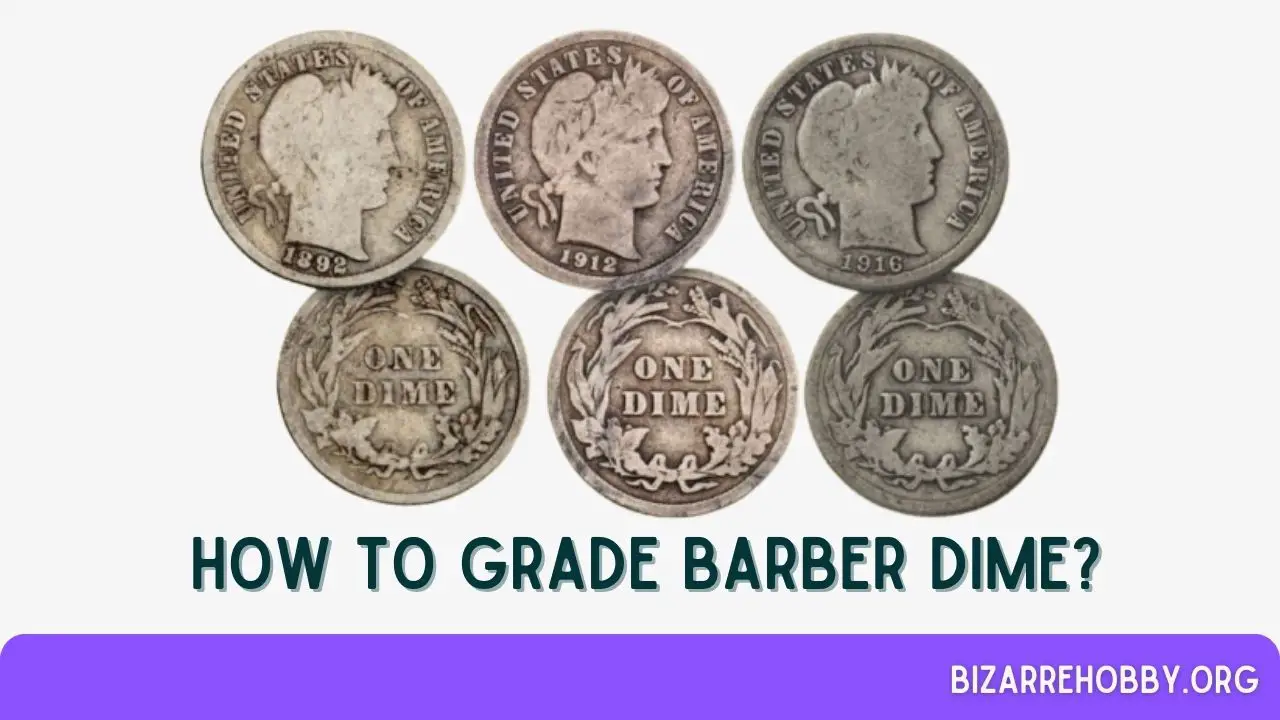Understanding the nuances in a Barber dime’s condition is essential to accurately determine its value. Key aspects to examine include the coin’s mint luster, toning, and any abrasions.
Experts dedicate years to mastering the precise grading of Barber dimes, especially when dealing with circulated pieces or those with rare minting errors. Even a minor detail can significantly impact the coin’s value.
Table of Contents
Barber Dime Grading Standards
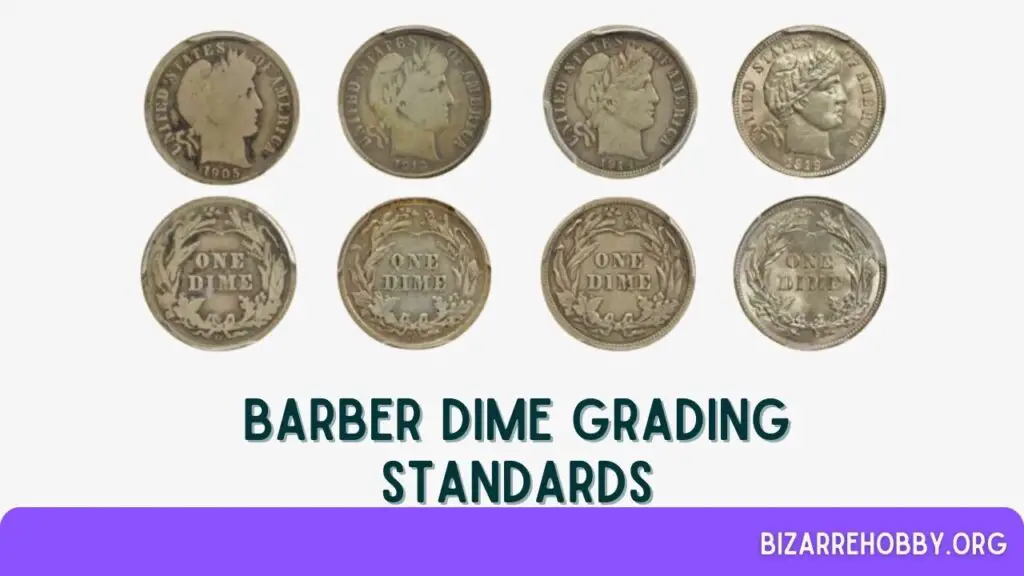
Grading coins, particularly those that have been in circulation, can be challenging for beginners. Evaluating circulated coins requires basic knowledge, but assessing mint state coins demands a trained eye due to subtle variations.
- Lighting: A high-quality light source is crucial. Many collectors use a 75-watt bulb attached to a lamp on their table. For those who prefer LED bulbs, a bright white bulb is ideal. Proper lighting helps you detect color differences, tiny scratches, and minting errors that are otherwise hard to see.
- Magnification: A good magnifying glass that magnifies 5 to 8 times is essential. Magnifiers below 5x are too weak to reveal critical details, while those above 8x are impractical for grading.
- Circulation Assessment: Determine if your coin is uncirculated or shows signs of use. Coins with only slight wear on high points are likely in About Uncirculated condition.
- Sheldon Scale: Use the Grading coins, particularly those that have been in circulation, can be challenging for beginners. Evaluating circulated coins requires basic knowledge, but assessing mint state coins demands a trained eye due to subtle variations.
- Lighting: A high-quality light source is crucial. Many collectors use a 75-watt bulb attached to a lamp on their table. For those who prefer LED bulbs, a bright white bulb is ideal. Proper lighting helps you detect color differences, tiny scratches, and minting errors that are otherwise hard to see.
- Magnification: A good magnifying glass that magnifies 5 to 8 times is essential. Magnifiers below 5x are too weak to reveal critical details, while those above 8x are impractical for grading.
- Circulation Assessment: Determine if your coin is uncirculated or shows signs of use. Coins with only slight wear on high points are likely in About Uncirculated condition.
- Sheldon Scale: Use the Sheldon scale to compare your dime with established guidelines. Note that the scale is not proportional. For example, the difference between VF 20 and EF 40 can range from 5% to 60% lost details, whereas the difference between EF 40 and MS 60 is more subtle. The Official ANA Grading Standards provide detailed descriptions for every American coin in various conditions.
By following these guidelines, you can accurately grade your Barber dimes and understand their true value.
Understanding Grades for Barber Dime
The Barber dime, designed by Charles Barber, was first minted in 1892 and continued for 25 years until it was replaced by the Mercury dime in 1916. Despite their historical significance, Barber dimes were not popular among collectors initially and have often been overlooked.
If you appreciate this series, it’s essential to learn how to grade your Barber dimes accurately. The most straightforward method is to use the ANA grading standards, which provide detailed descriptions for every possible coin condition. These standards also include information on the number of dimes in the series, categorized by mint marks and dates.
Additionally, the ANA guide offers insights into minting quality and highlights common and rare errors specific to certain mints. It also describes subtle differences in coin conditions that can significantly impact their value.
By understanding these grading standards, you can better appreciate and evaluate your Barber dime collection.
Barber Dime Details
| Specification | Detail |
|---|---|
| Face Value | Ten cents ($0.1) |
| Compound | Silver (90%) |
| Coin Weight | 0.080 troy ounces (2.5 g) |
| Coin Diameter | 0.705 inches (17.91 mm) |
| Coin Thickness | 0.053 inches (1.35 mm) |
How to Grade Barber Dime?
Accurate grading of Barber dimes is crucial for understanding their appearance, quality, and collectability. It also helps in determining their precise market value. While most coins fall within expected price ranges, rare dimes in exceptional condition or with unique minting errors can fetch significantly higher prices at auctions, driven by collector enthusiasm.
By following these grading guidelines, you can accurately assess the condition and value of your Barber dimes.
1. About Good (AG)

Barber dimes in About Good (AG) condition are generally not collectible, even for beginners, due to their heavy wear and lack of recognizable details.
- Obverse: The coin’s rim is worn into the inscriptions, and Liberty’s head is barely outlined. The date is partially worn but still visible.
- Reverse: The wreath is partially worn, especially at the outer edges, merging into the rim. The denomination and mint mark remain readable.
2. Good (G, G4, G6)
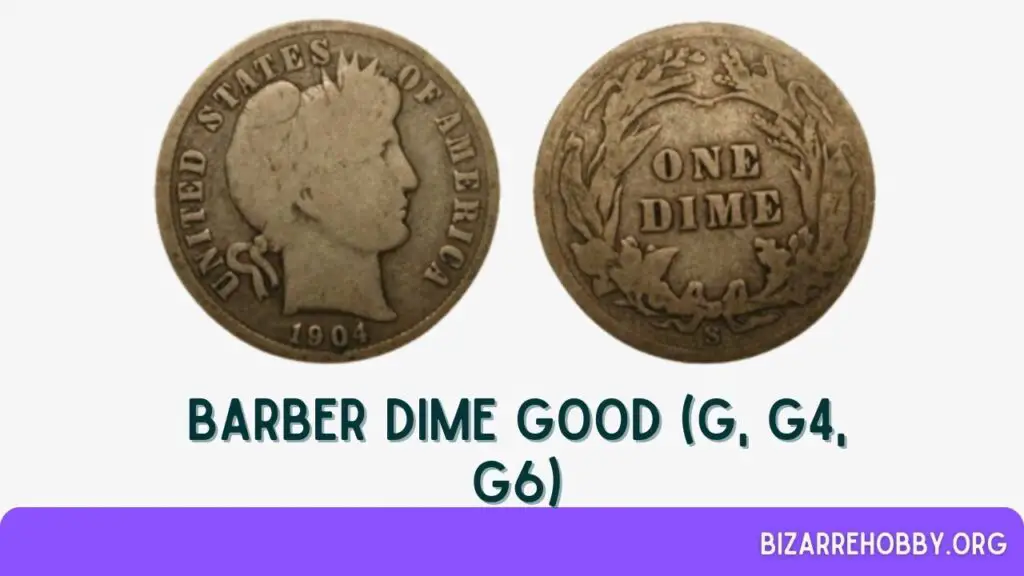
This is the lowest collectible grade for American coinage. Coins in this grade have worn-out images with missing major details, but their rims are intact, making them still desirable due to their bold design.
- Obverse: The Liberty image is outlined, and the coin rim is complete. The band with the word LIBERTY is not visible, but the legend and date are bold and readable, separated from the edge.
- Reverse: The rim is often complete, though not always. The date and major wreath elements, including grain stems, corn, and leaves, are recognizable, but surface details are missing. Leaves and corn on the right are flat and lack defined lines.
3. Very Good (VG, VG8, VG10)
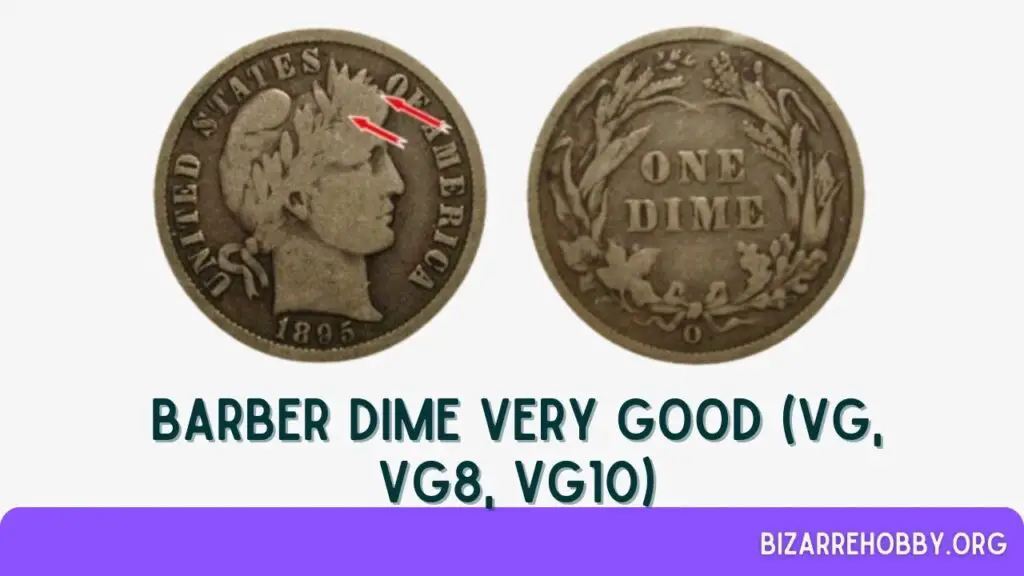
Barber dimes in Very Good (VG) condition are characterized by at least three visible letters in the word “LIBERTY” on the band in Liberty’s hair.
- Obverse: The head design is weak and barely recognizable, with most facial details smoothed out. The key is to find at least three readable letters in “LIBERTY,” regardless of which ones. The coin rim is complete.
- Reverse: The wreath shows a few details, but grain stalks and corn are smooth and flat. Bow outlines are recognizable, but the impression is weak.
4. Fine (F, F12, F15)
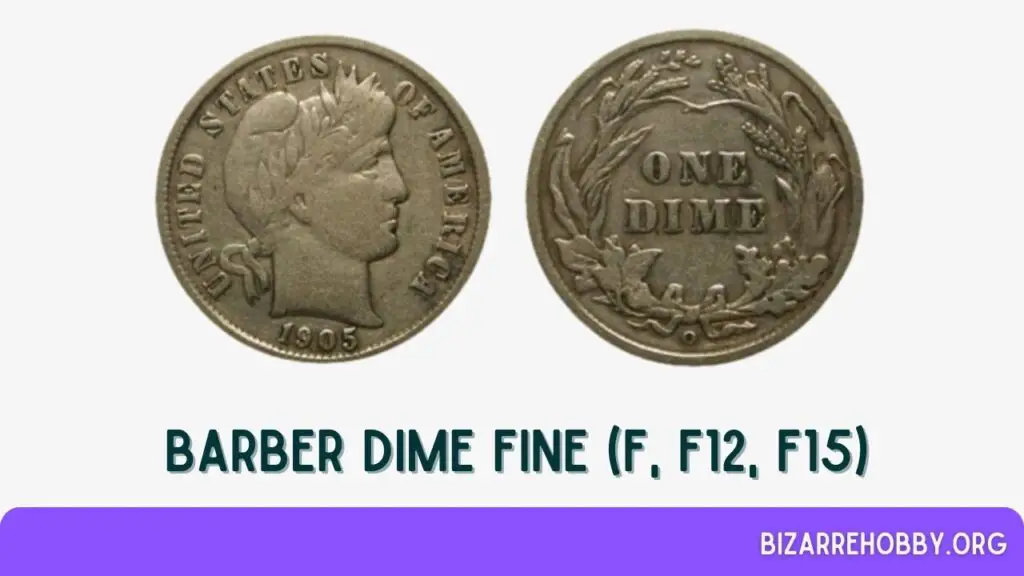
Barber dimes graded Fine (F) show noticeable signs of wear, with major design elements shallow and only outlines recognizable. However, several key features distinguish this grade from lower ones.
- Obverse: All letters in “LIBERTY” are visible, though some may have weak or missing bottom lines. More details in the laurel wreath are visible, but the bottom part is worn and smooth. The raised headband definition typical for this coin is not visible.
- Reverse: The denomination is well-preserved, but the wreath is worn with fine lines that are still smooth. Each leaf is detailed and visibly separated, and the bow has a defined knot and ribbons.
5. Very Fine (VF, VF20, VF25, VF30, VF35)
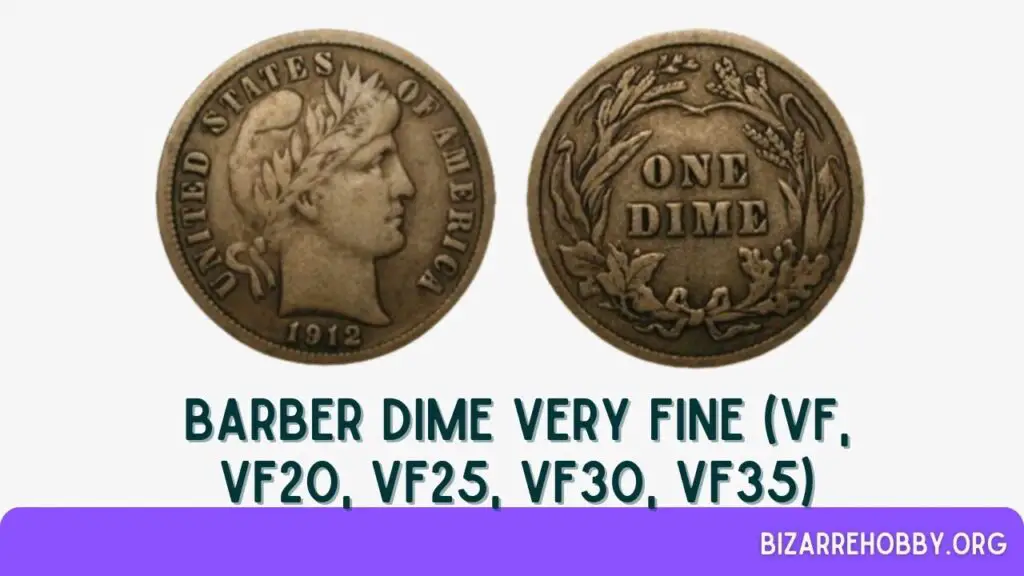
Coins in Very Fine (VF) condition have even and recognizable details on both sides, though some parts are still worn.
- Obverse: Liberty’s profile shows many details, and numerous significant ones in the laurel wreath in her hair are recognizable. All letters in “LIBERTY” are visible and even. The band struck on the bottom is complete.
- Reverse: Signs of wear are visible on lower leaves, but corn kernels and most details in the ribbon bow are recognizable.
6. Extra Fine (EF40, EF45)
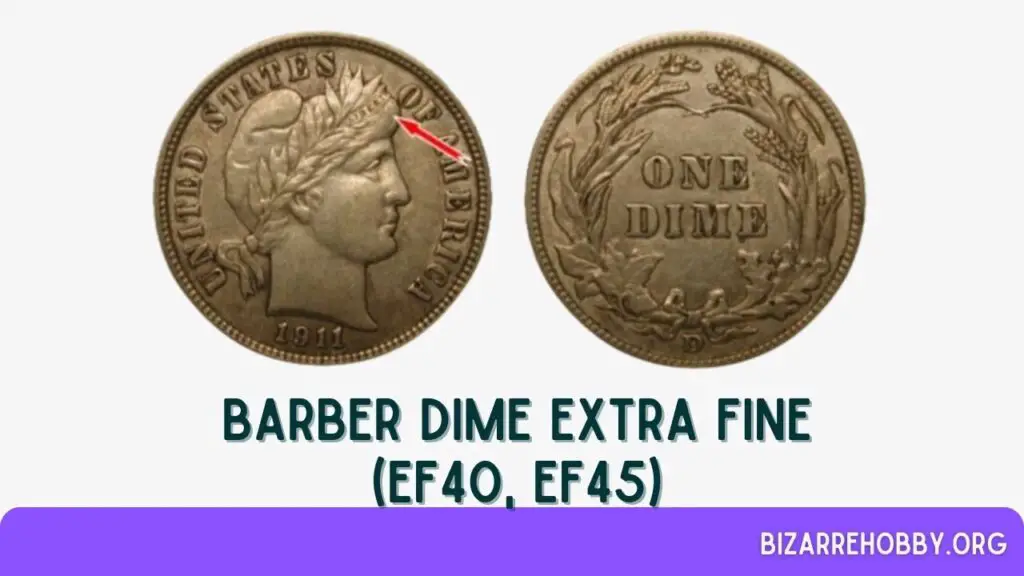
Barber dimes in Extra Fine (EF) condition show light wear, but most details are visible and well-defined. The mint luster is missing, but the coin surface looks distinct and sharp.
- Obverse: The band in Liberty’s hair is complete with the readable inscription “LIBERTY.” This is the lowest grade where her forehead and hair show three-dimensionality. Slight wear is visible only on the highest design areas, such as Liberty’s cheek and the highest upper leaves points.
- Reverse: The wreath and denomination are excellently defined and visible, although the highest wreath and bow points are lightly worn. Many details, like the corn kernels and grains of wheat, are recognizable and separated.
7. About Uncirculated (AU50, AU55, AU58)
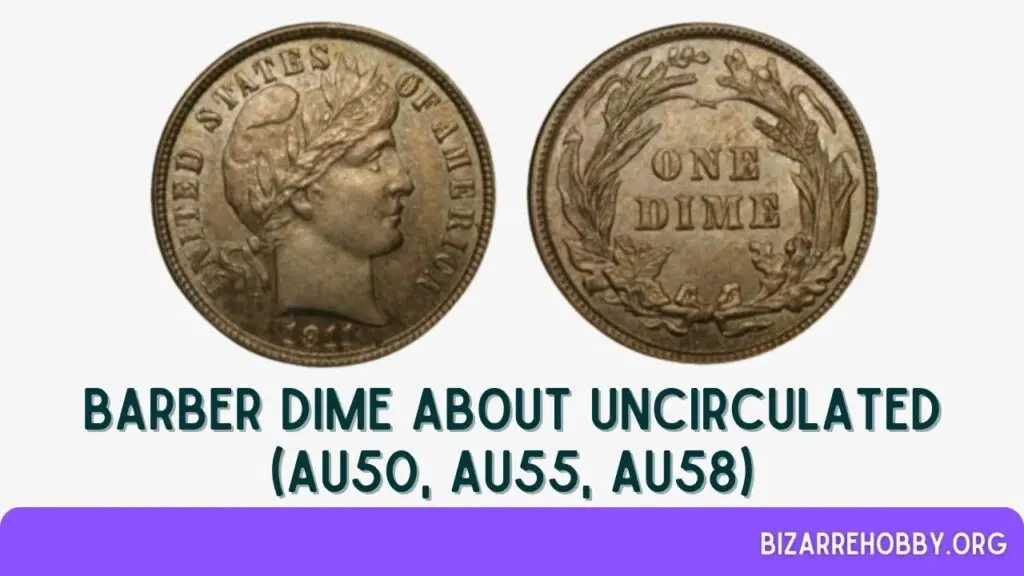
These Barber dimes appear to have spent little time in circulation, showing only light, barely visible signs of wear on the highest design points.
- Obverse: Mint luster is recognizable on the coin surface, with traces of wear on the highest hair points below the word “LIBERTY,” as well as on Liberty’s cheek and forehead top.
- Reverse: The ribbon bow shows slight traces of wear, visible on wheat grains and leaf tips. Approximately 75% of mint luster should be present.
8. Mint State (from MS60 to MS70)
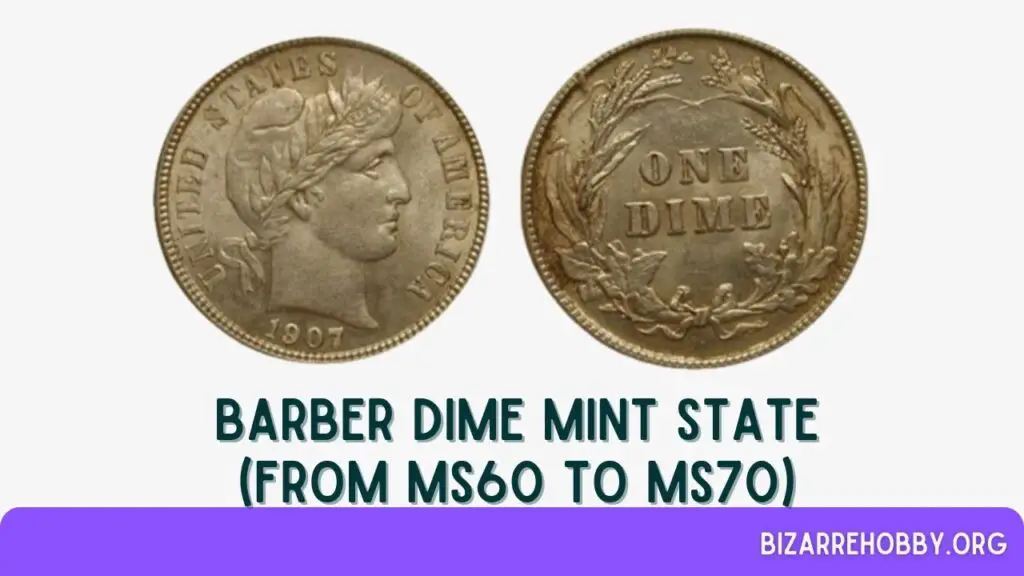
Barber dimes in Mint State are almost perfectly preserved, with bright top design areas and a surface free of wear. However, slight wear on the highest points, primarily Liberty’s cheek, can occur due to contact while packed in bags, resulting in so-called bag marks.
Final Thoughts
Grading Barber dimes accurately is essential for any collector aiming to understand the true value and condition of their coins. By following the detailed guidelines and using the right tools, you can ensure that your assessments are precise and reliable. Whether you’re a novice or an experienced numismatist, mastering the art of grading will enhance your appreciation for these historical pieces and potentially increase their market value.
